Study on Damage Characteristics and Failure Modes of Gypsum Rock under Dynamic Impact Load
Abstract
1. Introduction
2. Study on Dynamic Impact Test of Gypsum Rock
2.1. Specimen Preparation
2.2. SHPB Test Apparatus and Principle
2.3. Test Results and Discussions
2.3.1. Dynamic Stress Equilibrium
2.3.2. Analysis of Test Results
- (1)
- Analysis of stress-strain curve
- (2)
- Analysis of failure modes
- (3)
- Analysis of energy dissipation
- (4)
- Analysis of strain rate effect on dynamic parameters
3. Numerical Simulation of Dynamic Impact of Gypsum Rock Based on RHT Model
3.1. Establishment of Numerical Calculation Model
3.1.1. Determination of RHT Model Parameters
- (1)
- Parameter determination of state equation
- (2)
- Parameter determination of RHT constitutive equation
3.1.2. Parameter Selection of RHT Model
3.2. Analysis of Numerical Results
3.2.1. Comparative Analysis of Dynamic Characteristics and Failure Modes
3.2.2. Analysis of Rock Failure Process
4. Conclusions
- (1)
- The impact test results showed that the peak stress, energy dissipation energy density, and crushing size of gypsum rock exhibit obvious correlations. With the increase of strain rate, peak strength and energy dissipation energy density increased exponentially. The crushing size had a negative exponential relationship with the strain rate and tended to be gentle with an increase in the strain rate. The dynamic elastic modulus was larger than the static elastic modulus. However, no strain-rate effect was exhibited.
- (2)
- The energy dissipation analysis during the test process indicated that the dynamic strength of the gypsum rock specimens increased exponentially with the energy dissipation density of crushing. Similarly, the relationship between energy dissipation density and specimen crushing size at varying strain rates satisfied the power-exponential function. This shows that a higher strain rate leads to a higher absorption energy of the specimen, and the number of microcracks generated by excitation is greater, which leads to complete breakage.
- (3)
- The laboratory test results proved that the optimized numerical calculation model could effectively describe the dynamic characteristics of gypsum rock. In subsequent research, it can be used as a supplementary method to study the dynamic and damage characteristics of gypsum rock at higher strain rates.
- (4)
- Under the impact of a low strain rate, if the loading strength was within the elastic range of the specimen, it is manifested as the generation of internal microcracks, without macroscopic cracks or deformations. Under the impact of a high strain rate, the fracture of gypsum rock can be divided into the crack compaction, crack initiation, crack propagation, and breaking stages, and is dominated by splitting failure. With increasing strain rate, the failure mode changes from splitting to crushing failure, and the interaction between cracks cannot be ignored.
Author Contributions
Funding
Institutional Review Board Statement
Informed Consent Statement
Data Availability Statement
Conflicts of Interest
References
- Auvray, C.; Homand, F.; Hoxha, D. The Influence of Relative Humidity on the Rate of Convergence in an Underground Gypsum Mine. Int. J. Rock Mech. Min. Sci. 2008, 45, 1454–1468. [Google Scholar] [CrossRef]
- Cao, W.; Li, X.; Tao, M.; Zhou, Z. Vibrations Induced by High Initial Stress Release during Underground Excavations. Tunn. Undergr. Space Technol. 2016, 53, 78–95. [Google Scholar] [CrossRef]
- Zhou, Z.; Zhao, Y.; Cao, W.; Chen, L.; Zhou, J. Dynamic Response of Pillar Workings Induced by Sudden Pillar Recovery. Rock Mech. Rock Eng. 2018, 51, 3075–3090. [Google Scholar] [CrossRef]
- Shun, P.; Xu, X.; Zhou, Y.; Zang, G.; Wang, J. Investigation of Instability and Blasting Caving Technology of Composite Support Structure in the Goaf of Gypsum Mine. Geotech. Geol. Eng. 2021, 39, 4377–4391. [Google Scholar] [CrossRef]
- Zhao, Y.; Gao, Y.; Wu, S. Influence of Different Concealment Conditions of Parallel Double Flaws on Mechanical Properties and Failure Characteristics of Brittle Rock under Uniaxial Compression. Theor. Appl. Fract. Mech. 2020, 109, 102751. [Google Scholar] [CrossRef]
- Field, J.E.; Walley, S.M.; Proud, W.G.; Goldrein, H.T.; Siviour, C.R. Review of Experimental Techniques for High Rate Deformation and Shock Studies. Int. J. Impact Eng. 2004, 30, 725–775. [Google Scholar] [CrossRef]
- Zhou, Y.X.; Xia, K.; Li, X.B.; Li, H.B.; Ma, G.W.; Zhao, J.; Zhou, Z.L.; Dai, F. Suggested Methods for Determining the Dynamic Strength Parameters and Mode-I Fracture Toughness of Rock Materials. Int. J. Rock Mech. Min. Sci. 2012, 49, 105–112. [Google Scholar] [CrossRef]
- Han, Z.; Li, D.; Li, X. Dynamic Mechanical Properties and Wave Propagation of Composite Rock-Mortar Specimens Based on SHPB Tests. Int. J. Min. Sci. Technol. 2022, 32, 793–806. [Google Scholar] [CrossRef]
- Wei, Y.; Lu, Z.; Hu, K.; Li, X.; Li, P. Dynamic Response of Ceramic Shell for Titanium Investment Casting under High Strain-Rate SHPB Compression Load. Ceram. Int. 2018, 44, 11702–11710. [Google Scholar] [CrossRef]
- Zhou, X.-P.; Gu, S.-Y. Dynamic Mechanical Properties and Cracking Behaviours of Persistent Fractured Granite under Impact Loading with Various Loading Rates. Theor. Appl. Fract. Mech. 2022, 118, 103281. [Google Scholar] [CrossRef]
- Zhang, L.; Zhang, Z.; Chen, Y.; Liu, Y.; Luo, X.; Dai, B. Experimental Investigation of Mechanical and Fracture Behavior of Parallel Double Flawed Granite Material under Impact with Digital Image Correlation. Materials 2023, 16, 2263. [Google Scholar] [CrossRef]
- Gong, H.; Luo, Y.; Zhou, J.; Zhao, C.; Li, X. Fracture Behaviors and Damage Evolution Anisotropy of Granite under Coupling of Multiaxial Confinement and Dynamic Loading. Rock Mech. Rock Eng. 2023, 56, 2515–2534. [Google Scholar] [CrossRef]
- Robbiano, F.; Liu, K.; Zhang, Q.-B.; Orellana, L.F. Dynamic Uniaxial Compression Testing of Veined Rocks under High Strain Rates. Int. J. Rock Mech. Min. Sci. 2022, 153, 105085. [Google Scholar] [CrossRef]
- Kong, X.; Wang, E.; Li, S.; Lin, H.; Zhang, Z.; Ju, Y. Dynamic Mechanical Characteristics and Fracture Mechanism of Gas-Bearing Coal Based on SHPB Experiments. Theor. Appl. Fract. Mech. 2020, 105, 102395. [Google Scholar] [CrossRef]
- Gong, F.-Q.; Si, X.-F.; Li, X.-B.; Wang, S.-Y. Dynamic Triaxial Compression Tests on Sandstone at High Strain Rates and Low Confining Pressures with Split Hopkinson Pressure Bar. Int. J. Rock Mech. Min. Sci. 2019, 113, 211–219. [Google Scholar] [CrossRef]
- Zhou, Y.; Sheng, Q.; Li, N.; Fu, X. The Influence of Strain Rate on the Energy Characteristics and Damage Evolution of Rock Materials Under Dynamic Uniaxial Compression. Rock Mech. Rock Eng. 2020, 53, 3823–3834. [Google Scholar] [CrossRef]
- Feng, P.; Xu, Y.; Dai, F. Effects of Dynamic Strain Rate on the Energy Dissipation and Fragment Characteristics of Cross-Fissured Rocks. Int. J. Rock Mech. Min. Sci. 2021, 138, 104600. [Google Scholar] [CrossRef]
- Wang, Z.; Yao, J.; Tian, N.; Zheng, J.; Gao, P. Mechanical Behavior and Damage Evolution for Granite Subjected to Cyclic Loading. Adv. Mater. Sci. Eng. 2018, 2018, 4312494. [Google Scholar] [CrossRef]
- Li, X.B.; Lok, T.S.; Zhao, J. Dynamic Characteristics of Granite Subjected to Intermediate Loading Rate. Rock Mech. Rock Engng. 2005, 38, 21–39. [Google Scholar] [CrossRef]
- Huang, B.; Fu, S.; Xiao, Y. Uniaxial Compressive Behavior of Granite at High Strain Rates. Rock Mech. Rock Eng. 2021, 54, 4695–4721. [Google Scholar] [CrossRef]
- Li, X.; Zou, Y.; Zhou, Z. Numerical Simulation of the Rock SHPB Test with a Special Shape Striker Based on the Discrete Element Method. Rock Mech. Rock Eng. 2014, 47, 1693–1709. [Google Scholar] [CrossRef]
- Luo, Y.; Wang, G.; Li, X.; Liu, T.; Mandal, A.K.; Xu, M.; Xu, K. Analysis of Energy Dissipation and Crack Evolution Law of Sandstone under Impact Load. Int. J. Rock Mech. Min. Sci. 2020, 132, 104359. [Google Scholar] [CrossRef]
- Zhou, Z.; Zhao, Y.; Jiang, Y.; Zou, Y.; Cai, X.; Li, D. Dynamic Behavior of Rock during Its Post Failure Stage in SHPB Tests. Trans. Nonferrous Met. Soc. China 2017, 27, 184–196. [Google Scholar] [CrossRef]
- Sun, B.; Chen, R.; Ping, Y.; Zhu, Z.; Wu, N.; He, Y. Dynamic Response of Rock-like Materials Based on SHPB Pulse Waveform Characteristics. Materials 2022, 15, 210. [Google Scholar] [CrossRef] [PubMed]
- Zhu, C.; Li, W.; An, Y. Split Hopkinson Pressure Bar Test and Its Numerical Analysis Based on Transparent Rock Samples. KSCE J. Civ. Eng. 2022, 26, 4128–4135. [Google Scholar] [CrossRef]
- Chen, Q.; Zuo, Y.; Lin, J.; Chen, B.; Zheng, L. Numerical Research on Response Characteristics of Surrounding Rock for Deep Layered Clastic Rock Roadway under Static and Dynamic Loading Conditions. Geomech. Geophys. Geo-Energ. Geo-Resour. 2022, 8, 91. [Google Scholar] [CrossRef]
- Li, F.; Sun, R.; Zhang, Y.; Wang, G.; Xiang, G. Dynamic Response Characteristics and Damage Evolution of Multi-Layer Combined Coal and Rock Mass under Impact Loading. Sustainability 2022, 14, 9175. [Google Scholar] [CrossRef]
- Peng, K.; Gao, K.; Liu, J.; Liu, Y.; Zhang, Z.; Fan, X.; Yin, X.; Zhang, Y.; Huang, G. Experimental and Numerical Evaluation of Rock Dynamic Test with Split-Hopkinson Pressure Bar. Adv. Mater. Sci. Eng. 2017, 2017, 2048591. [Google Scholar] [CrossRef]
- Ren, L.; Yu, X.; Zheng, M.; Xue, Z.; Wu, B.; He, Y. Evaluation of Typical Dynamic Damage Models Used for UHPC Based on SHPB Technology. Eng. Fract. Mech. 2022, 269, 108562. [Google Scholar] [CrossRef]
- Wang, Z.; Wang, H.; Wang, J.; Tian, N. Finite Element Analyses of Constitutive Models Performance in the Simulation of Blast-Induced Rock Cracks. Comput. Geotech. 2021, 135, 104172. [Google Scholar] [CrossRef]
- Zhang, Z.X.; Kou, S.Q.; Jiang, L.G.; Lindqvist, P.-A. Effects of Loading Rate on Rock Fracture: Fracture Characteristics and Energy Partitioning. Int. J. Rock Mech. Min. Sci. 2000, 37, 745–762. [Google Scholar] [CrossRef]
- Li, M.; Mao, X.; Lu, A.; Tao, J.; Zhang, G.; Zhang, L.; Li, C. Effect of Specimen Size on Energy Dissipation Characteristics of Red Sandstone under High Strain Rate. Int. J. Min. Sci. Technol. 2014, 24, 151–156. [Google Scholar] [CrossRef]
- Zhang, X.; Ma, L.; Zhu, Z.; Zhou, L.; Wang, M.; Peng, T. Experimental Study on the Energy Evolution Law during Crack Propagation of Cracked Rock Mass under Impact Loads. Theor. Appl. Fract. Mech. 2022, 122, 103579. [Google Scholar] [CrossRef]
- Zhu, J.; Hu, S.; Wang, L. An Analysis of Stress Uniformity for Concrete-like Specimens during SHPB Tests. Int. J. Impact Eng. 2009, 36, 61–72. [Google Scholar] [CrossRef]
- Li, X.; Li, H.; Liu, K.; Zhang, Q.; Zou, F.; Huang, L.; Jian, Z. Dynamic properties and fracture characteristics of rocks subject to impact loading. Chin. J. Rock Mech. Eng. 2017, 36, 2393–2405. [Google Scholar] [CrossRef]
- Liu, X.; Wang, G.; Liu, T.; Lin, M.; Lei, H.; Mandal, A.K. Study on Dynamic Mechanical Properties of Phosphate Rock through Experimental Tests and Mesoscale Simulation. Arab J. Geosci. 2020, 13, 969. [Google Scholar] [CrossRef]
- Ge, Y.; Zhang, C.; Ren, G.; Zhang, L. Experimental Investigation of the Mechanical Behavior and Damage Evolution Mechanism of Oil-Impregnated Gypsum Rock. Sustainability 2022, 14, 11172. [Google Scholar] [CrossRef]
- Li, X.F.; Li, H.B.; Zhang, Q.B.; Jiang, J.L.; Zhao, J. Dynamic Fragmentation of Rock Material: Characteristic Size, Fragment Distribution and Pulverization Law. Eng. Fract. Mech. 2018, 199, 739–759. [Google Scholar] [CrossRef]
- Liu, K.; Wu, C.; Li, X.; Li, Q.; Fang, J.; Liu, J. A Modified HJC Model for Improved Dynamic Response of Brittle Materials under Blasting Loads. Comput. Geotech. 2020, 123, 103584. [Google Scholar] [CrossRef]
- Tao, M.; Zhao, H.; Momeni, A.; Wang, Y.; Cao, W. Fracture Failure Analysis of Elliptical Hole Bored Granodiorite Rocks under Impact Loads. Theor. Appl. Fract. Mech. 2020, 107, 102516. [Google Scholar] [CrossRef]
- Herrmann, W. Constitutive Equation for the Dynamic Compaction of Ductile Porous Materials. J. Appl. Phys. 1969, 40, 2490–2499. [Google Scholar] [CrossRef]
- Riedel, W.; Thoma, K.; Hiermaier, S.; Schmolinske, E. Penetration of Reinforced Concrete by BETA-B-500 Numerical Analysis Using a New Macroscopic Concrete Model for Hydrocodes. In Proceedings of the 9th International Symposium on the Effects of Munitions with Structures, Berlin-Strausberg, Germany, 3–7 May 1999. [Google Scholar]

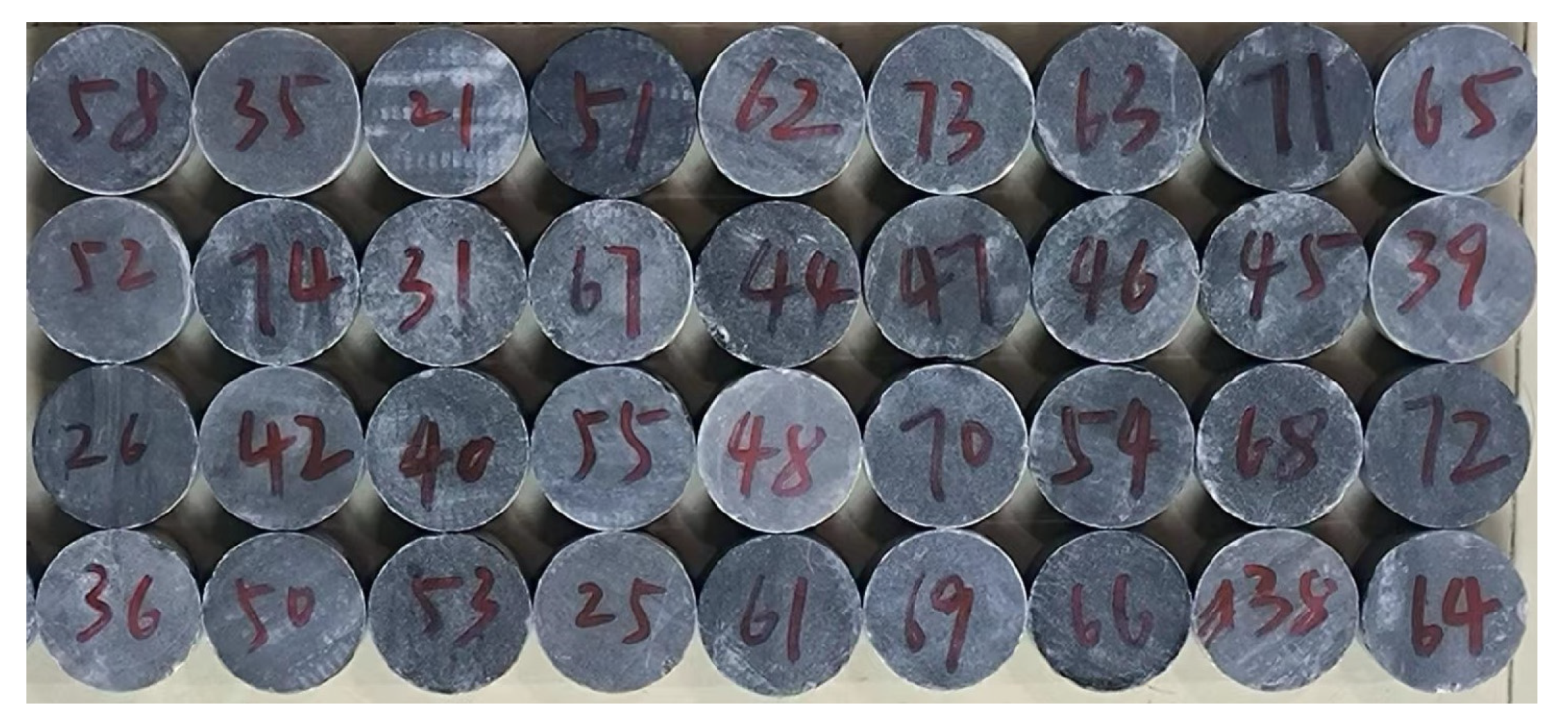

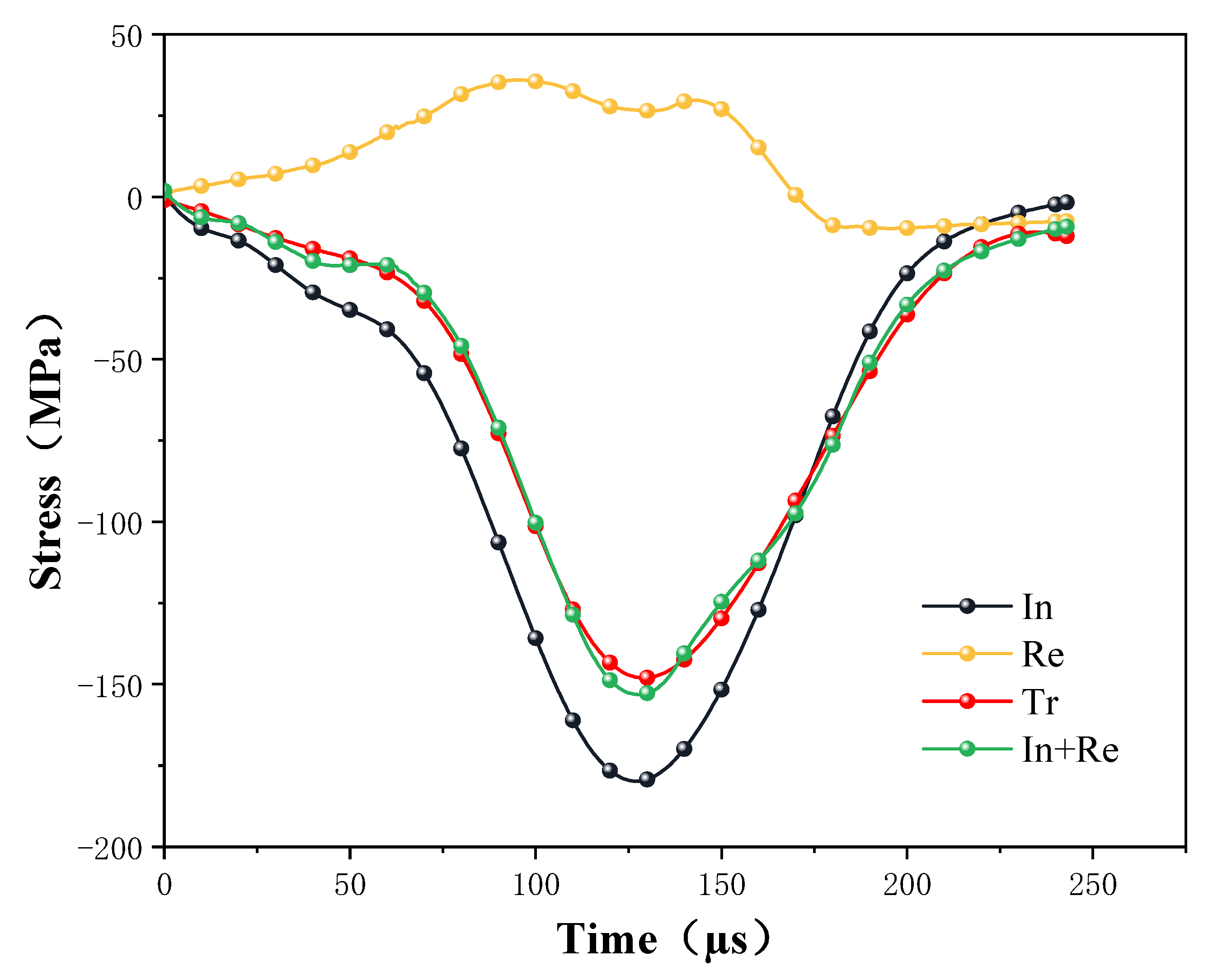

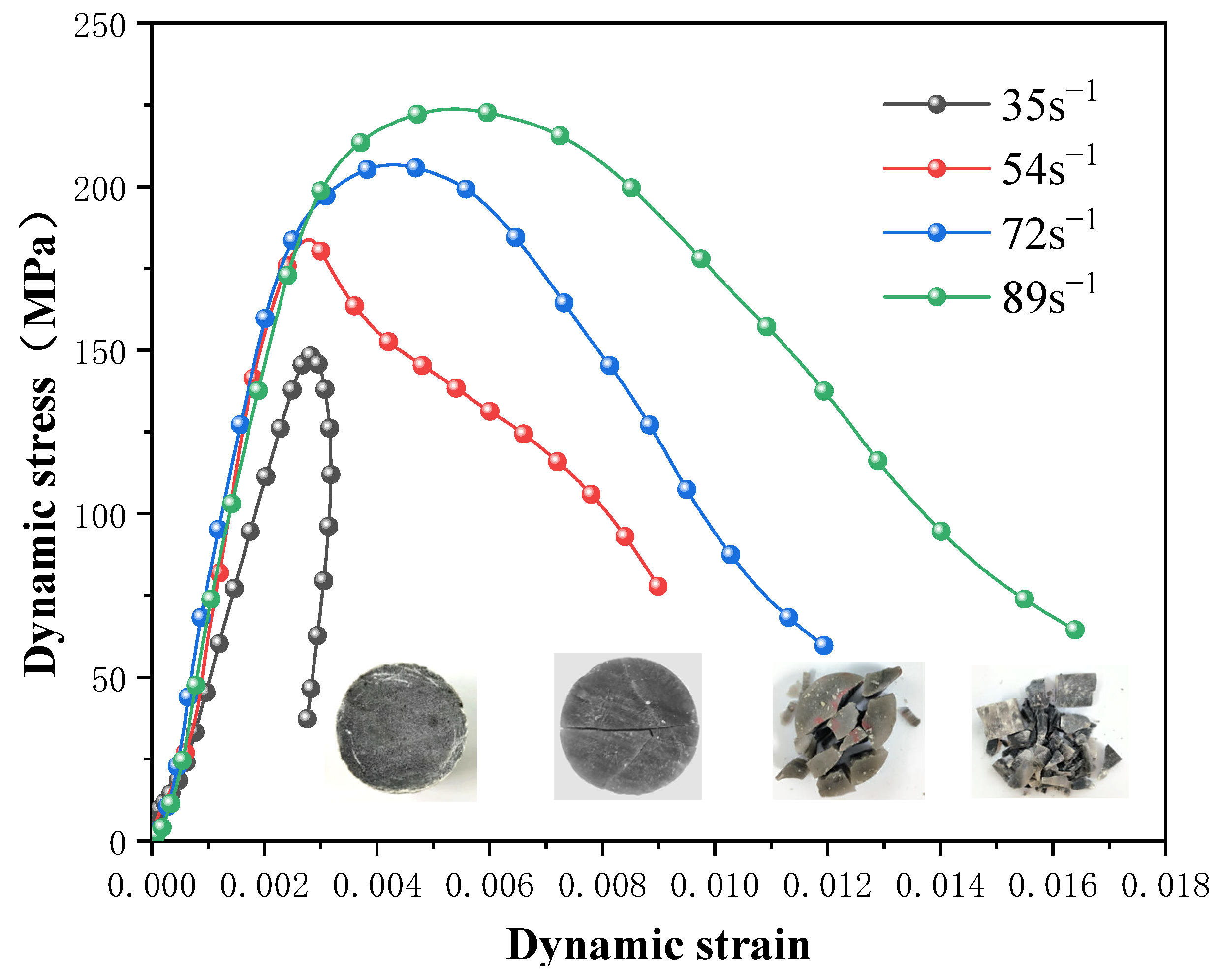

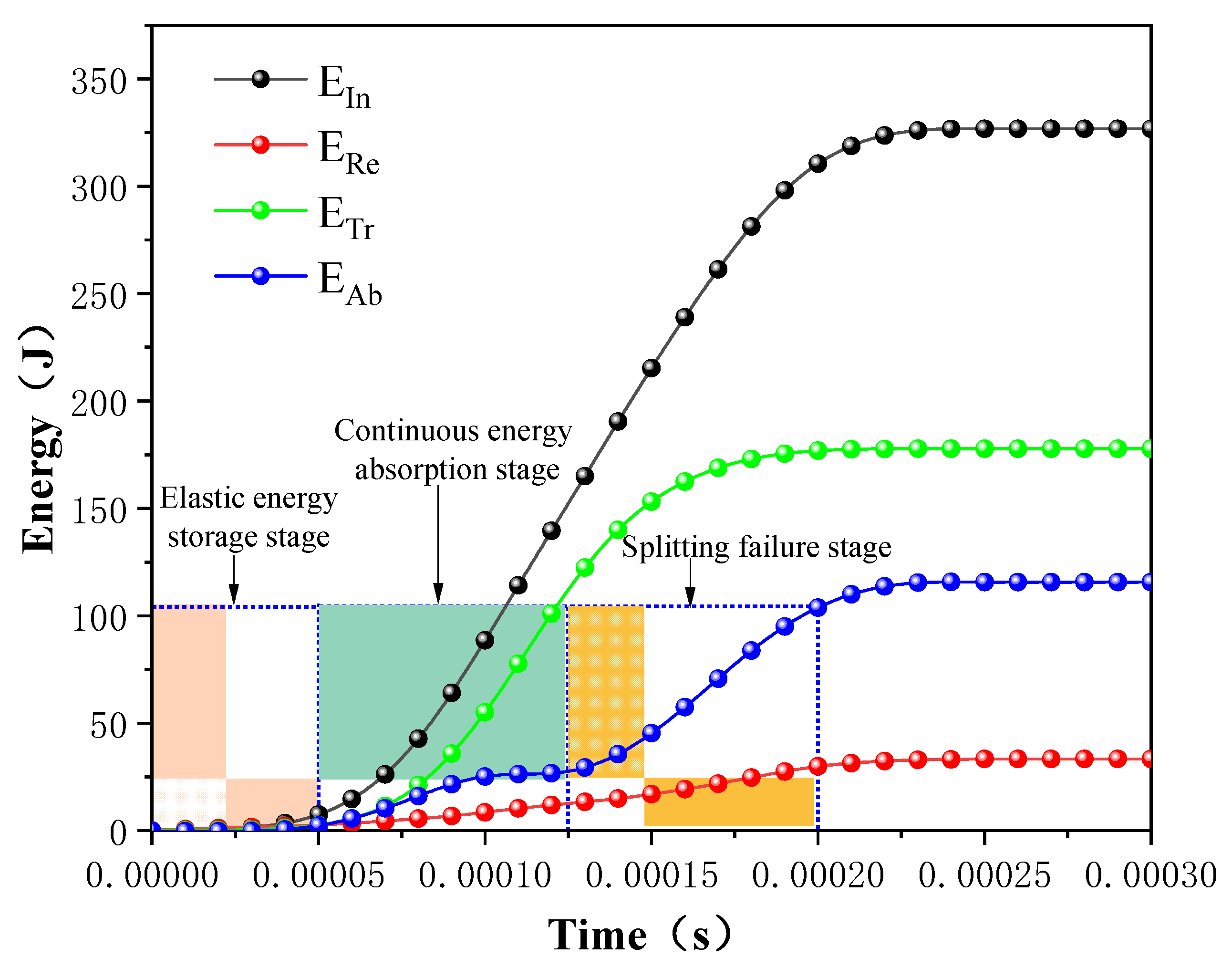
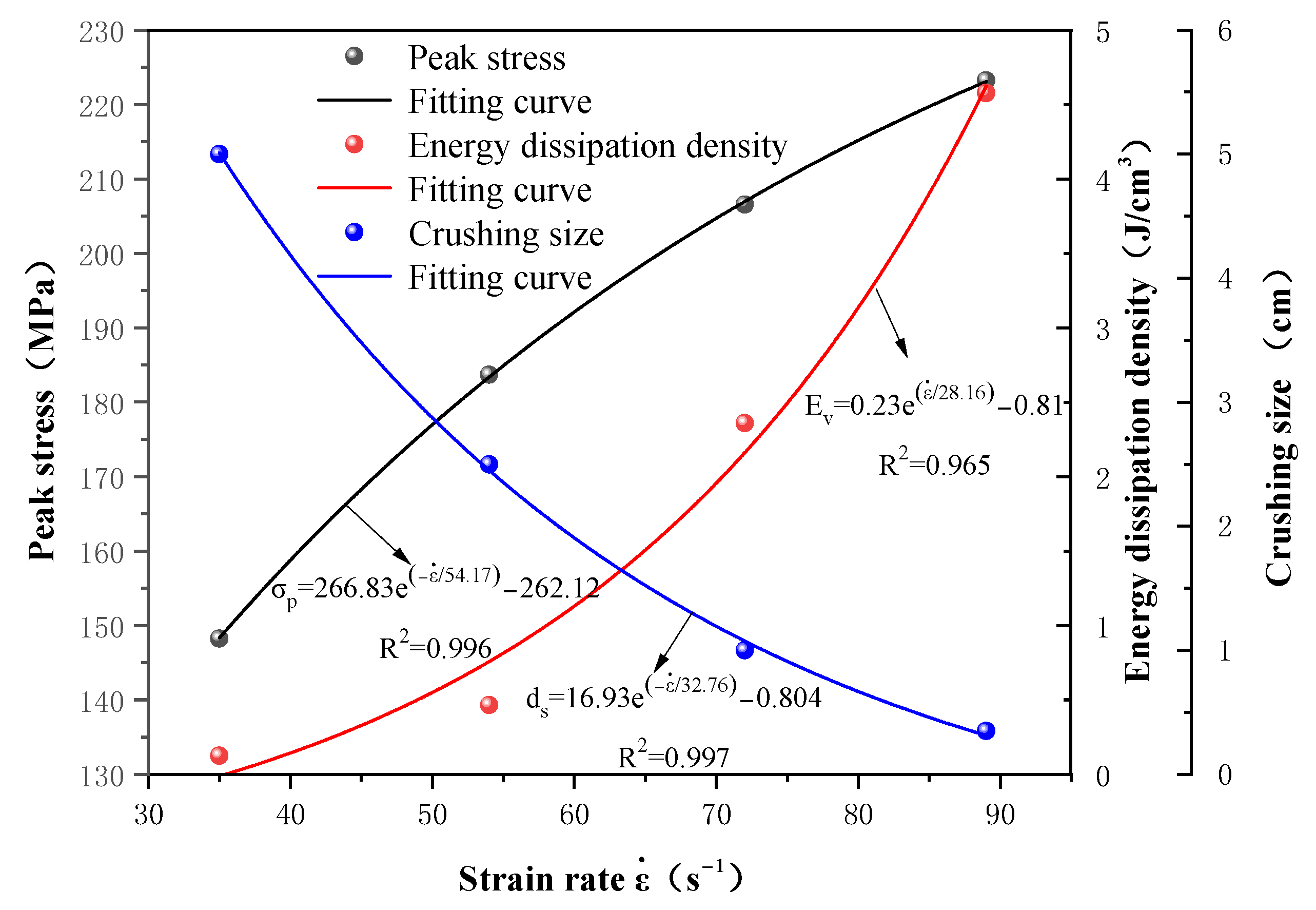
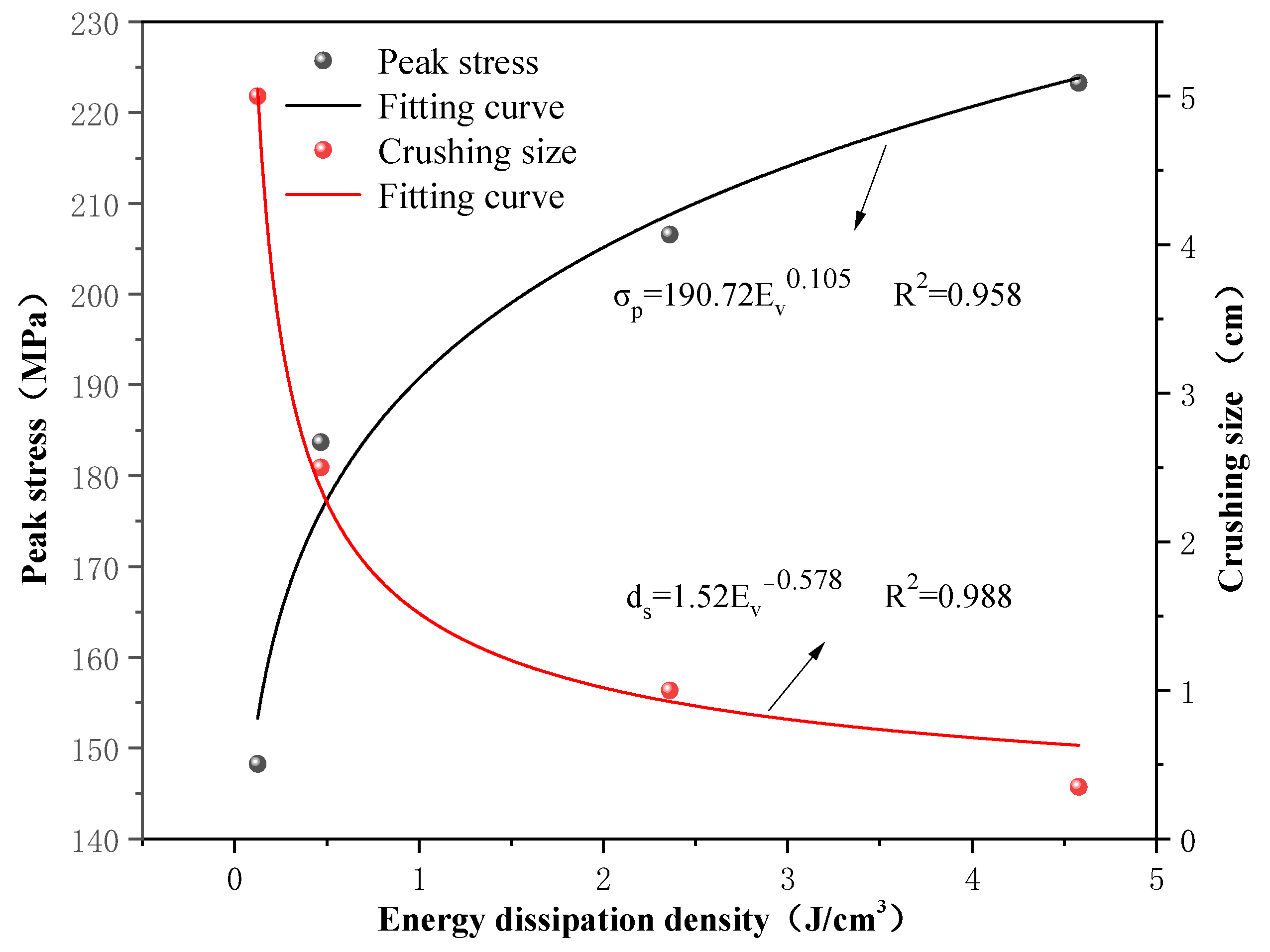

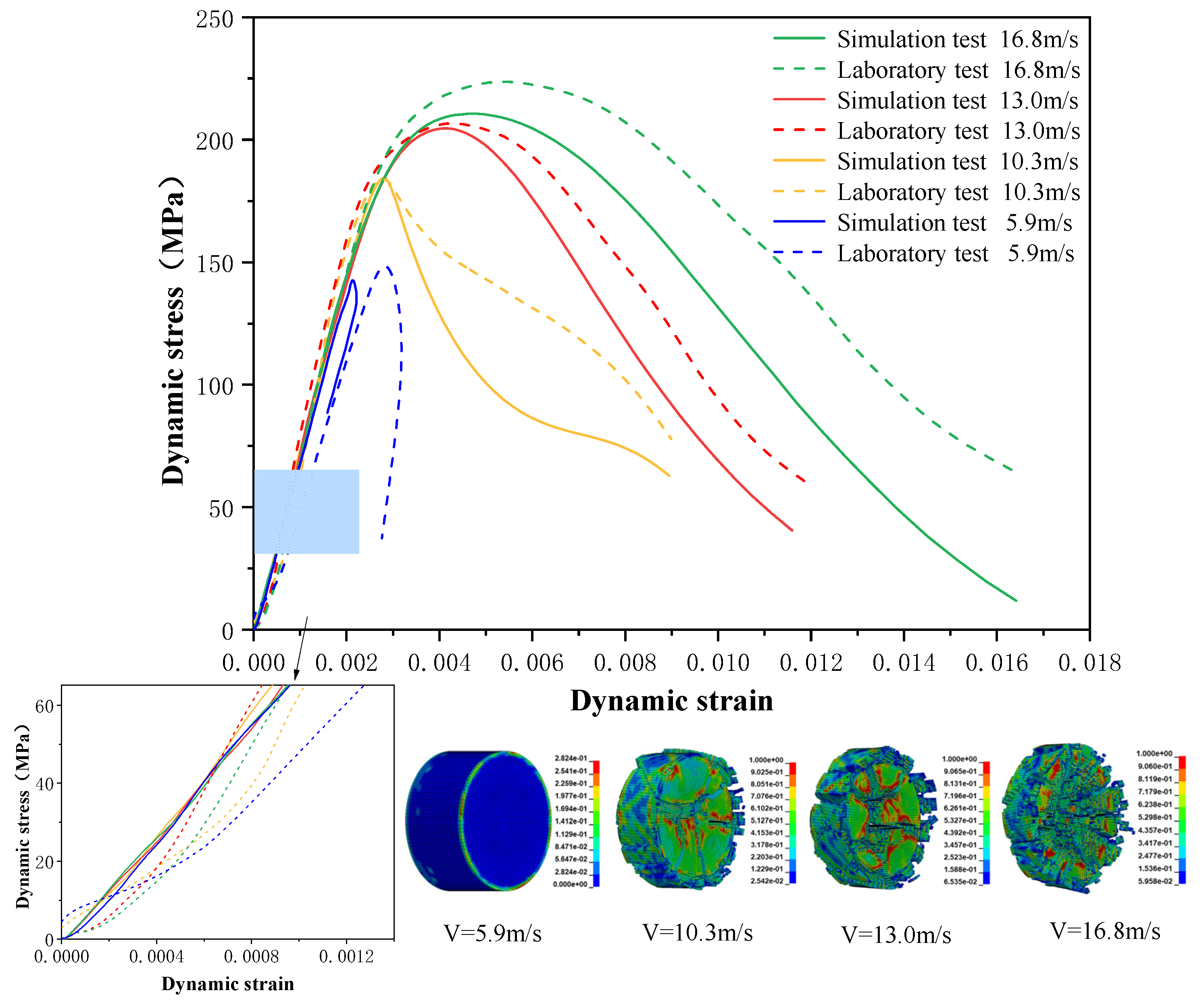
| Strain Rate (s−1) | Dynamic Peak Stress (MPa) | DIF | Dynamic Elastic Modulus (GPa) | Density of Energy Dissipation (J/cm3) | Crushing Size (cm) |
|---|---|---|---|---|---|
| 35 | 147.51 | 0.81 | 70.55 | 0.125 | 5 |
| 54 | 183.93 | 1.01 | 95.64 | 0.466 | 2.5 |
| 72 | 205.78 | 1.13 | 99.82 | 2.36 | 1 |
| 89 | 222.17 | 1.22 | 96.39 | 4.578 | 0.36 |
| Parameter Symbolic | Value | Parameter Symbolic | Value | Parameter Symbolic | Value |
|---|---|---|---|---|---|
| 2.917 g/cm3 | 182 MPa | 1.02 | |||
| 60.7 MPa | 0.0099 | 0.0071 | |||
| 134 GPa | 226 GPa | 138 GPa | |||
| 1.68 | 1.68 | 1.34 | |||
| 0 | 36.74 GPa | 0.8 | |||
| 3 × 10−8 ms−1 | 3 × 10−9 ms−1 | 3 × 1022 ms−1 | |||
| 3 × 1022 ms−1 | 1 | 0.0105 | |||
| 0.57 | 0.7 | 2.44 | |||
| 0.45 | 0.13 | 0.6805 | |||
| 0.95 | 0.60 | 0.81 | |||
| 0.048 | 0.015 | 0.30 | |||
| 3 |
| Impact Velocity | Compaction Stage | Crack Initiation | Crack Propagation | Splitting Failure | Splitting Failure (Laboratory Test) |
|---|---|---|---|---|---|
| 5.9 m/s | 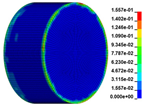 | 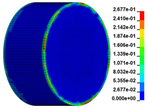 | 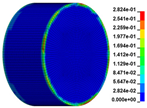 | 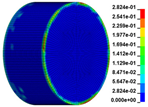 | 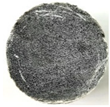 |
| 10.3 m/s | 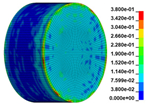 | 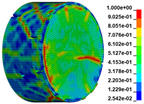 | 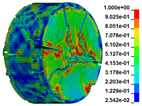 | 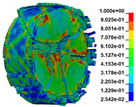 | 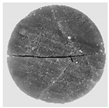 |
| 13.0 m/s |  |  | 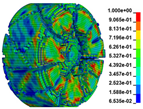 | 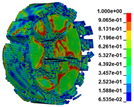 |  |
| 16.8 m/s | 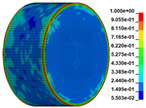 |  |  | 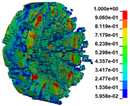 | 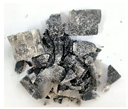 |
Disclaimer/Publisher’s Note: The statements, opinions and data contained in all publications are solely those of the individual author(s) and contributor(s) and not of MDPI and/or the editor(s). MDPI and/or the editor(s) disclaim responsibility for any injury to people or property resulting from any ideas, methods, instructions or products referred to in the content. |
© 2023 by the authors. Licensee MDPI, Basel, Switzerland. This article is an open access article distributed under the terms and conditions of the Creative Commons Attribution (CC BY) license (https://creativecommons.org/licenses/by/4.0/).
Share and Cite
Ge, Y.; Ren, G.; Zhang, C.; Shi, Y.; Zhang, L. Study on Damage Characteristics and Failure Modes of Gypsum Rock under Dynamic Impact Load. Materials 2023, 16, 3711. https://doi.org/10.3390/ma16103711
Ge Y, Ren G, Zhang C, Shi Y, Zhang L. Study on Damage Characteristics and Failure Modes of Gypsum Rock under Dynamic Impact Load. Materials. 2023; 16(10):3711. https://doi.org/10.3390/ma16103711
Chicago/Turabian StyleGe, Yongxiang, Gaofeng Ren, Congrui Zhang, Yihu Shi, and Luwei Zhang. 2023. "Study on Damage Characteristics and Failure Modes of Gypsum Rock under Dynamic Impact Load" Materials 16, no. 10: 3711. https://doi.org/10.3390/ma16103711
APA StyleGe, Y., Ren, G., Zhang, C., Shi, Y., & Zhang, L. (2023). Study on Damage Characteristics and Failure Modes of Gypsum Rock under Dynamic Impact Load. Materials, 16(10), 3711. https://doi.org/10.3390/ma16103711






